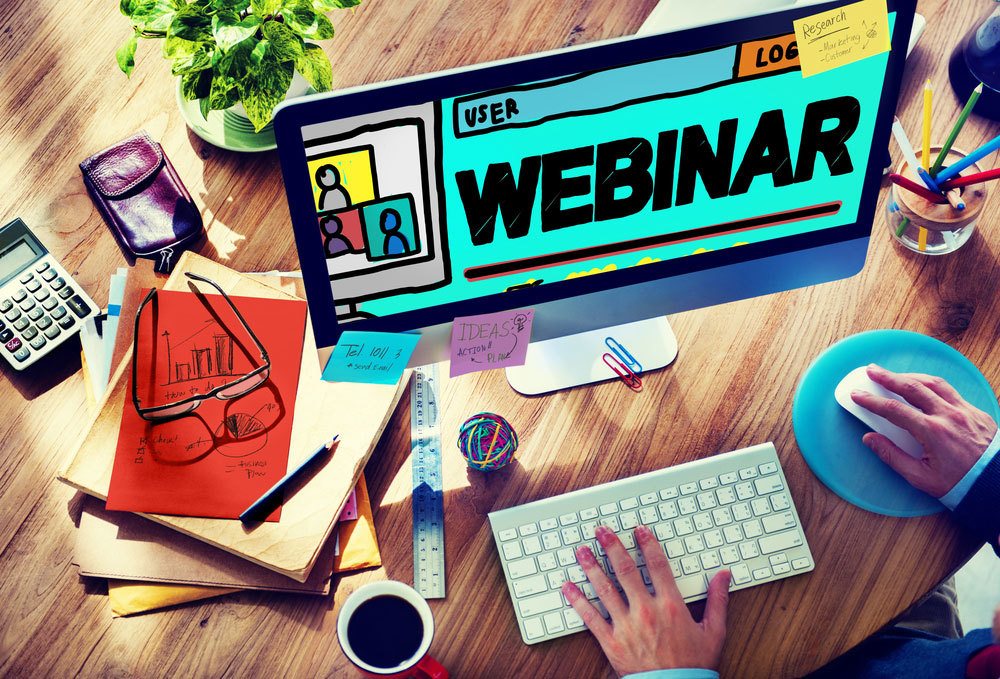The Ultimate Guide To Host A Winning Webinar
Webinars offer a time-saving, cost-efficient, and highly effective way to keep learners in-the-know. To provide your audience with a valuable eLearning experience that gives them the key takeaways they need in the real world, eLearning professionals must take on the role of "host with the most".
Getting Ready For The Main Event
- Get familiar with webinar tools and technology.
You don’t want to spend hours researching the subject matter, developing the eLearning content, and sending out invites only to realize that you don’t know how to use the webinar tools and technology. Not only do you need to know how to get the most out of the tools, but be comfortable using them when it’s show time. If you don’t know how to use screen casting or recording tools, your learners are probably going to notice. This can cause them to disengage from the eLearning experience and take value away from your overall eLearning experience. Take time to research the available tools and figure out which ones suit your needs, then learn as much as possible about their features and functions. Look for online tutorials or walkthroughs if you have issues, or take free online courses that are offered by the provider. - Do a test run.
Don’t wait until the last minute to log into the webinar platform. Do a test run well in advance to make sure you have all the tools you need and that all of your eLearning content is spot-on. In fact, you may even want to ask friends, family, or other members of your eLearning team to log into the platform and attend your “mock” webinar. Ask them for feedback, and have fun while you learn the user interface and controls. This will also help take the stress out of the main event, as you’ll already be used to the on-air experience. - Setup a webinar-ready space.
There are few things worse than attending a webinar where the presenter is distracted or background noise is constantly interrupting the eLearning experience. So, be sure to find a quiet spot that is free of distractions before beginning your webinar. In fact, try out a few different locations to see which one is best for your recording needs. You will also need to make sure your computer is ready for lights, camera, action. Close all unnecessary applications and have everything organized in one folder before you go live.
While You’re On-Air
- Mention the webinar hashtag and social media links.
Give your learners ample opportunity to ask questions and participate in the online discussion by mentioning hashtags in the beginning. You can also create an online forum or message board specifically for the online learning event. You will be able to address their questions during the event and provide an immediate response for their commentary. - Provide clear instructions.
You may already be familiar with the webinar hosting platform, but your learners are probably new to the interface. Therefore, you should take the time to walk them through the various features and functions they will need during the online event. Let them know where they can ask or answer questions, or provide their responses to polls and surveys. Also, if they are able to offer audio questions or commentary, give them clear instructions on how and when they may do so. - Always record the event.
You should always record your live webinars. Not only will your attendees have the opportunity to reference the recording at a later date, but learners who could not attend can still access the information. The webinar may even become an integral part of your eLearning course, as it can help boost interactivity and learners’ engagement. Just make sure that learners’ personal data is not recorded, and that you include the text dialog or read key points aloud to bring future viewers up to speed.
After The Webinar
- Offer learners a parting gift.
In addition to the recorded webinar, you may want to offer your learners a “souvenir” that they can take away from their online training experience. For instance, you can create a blog or webpage that includes all of the important concepts and ideas from the webinar, as well as links that you referenced during the event. Password protect the webpage so that only attendees can access the eLearning content. Another “parting gift” idea is giving them a discount on your upcoming eLearning course, especially if it’s related to the topics covered in the webinar. Don’t forget to ask them to sign up for your mailing list to receive notifications for upcoming online training events, and express your thanks for their time and participation. - Listen to the recording.
After you’ve held your winning webinar, listen back to the recording to figure out where your strengths and weaknesses lie. Do you need to slow down when you speak? Are there pieces of training content that you forgot to include? Do you need to work on your interactions with the audience? Is there an additional webinar tool that might make the online training experience even better or more interactive? You can use your notes to improve the webinar the next time around, so that future events run smoother and offer more value to your audience. You can also ask for feedback from your learners directly via online surveys and questionnaires, or even virtual interviews.
Webinars can draw in new learners and add more value to your existing online training courses. Use this guide to host a webinar that achieves learning objectives and bring more interactivity and collaboration to your eLearning deliverables.
Using an online forum to make your webinar more immersive and interactive? Read the article 10 Netiquette Tips For Online Discussions to discover 10 top netiquette tips that can make this online experience more beneficial for you audience.








